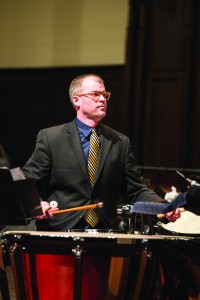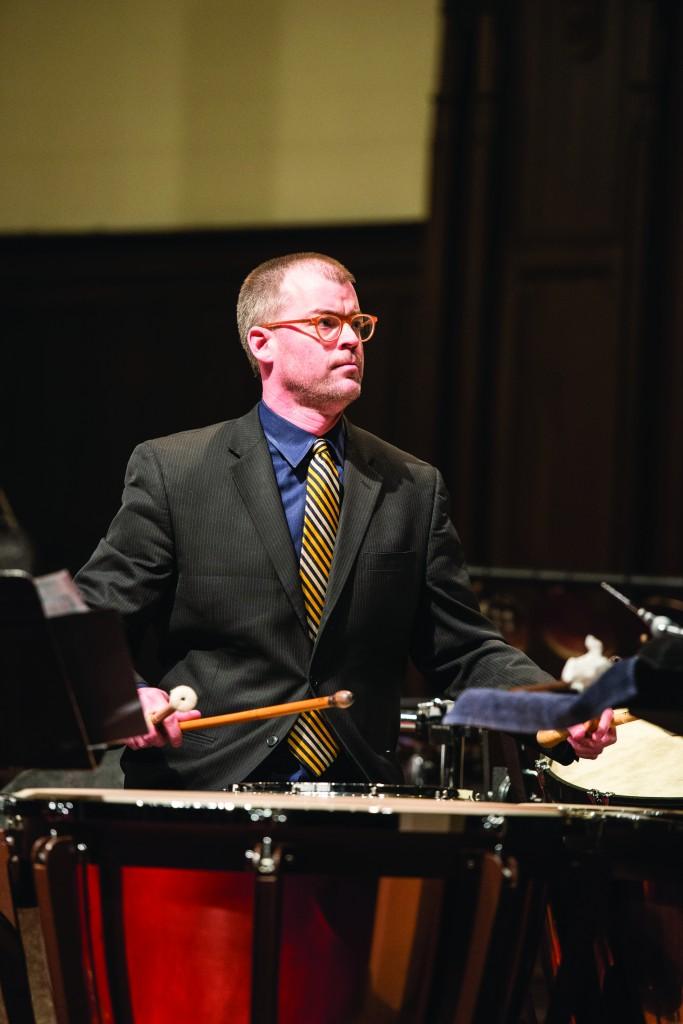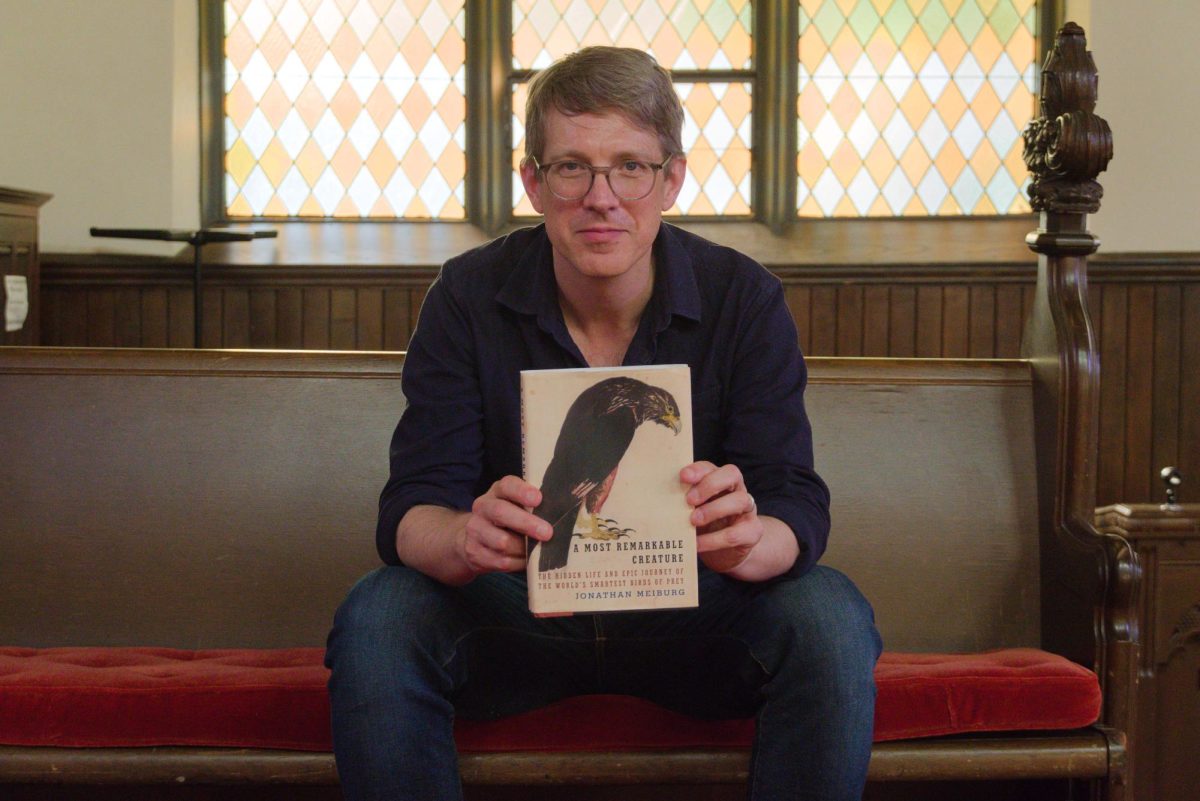On Tuesday, Feb. 18 Clive Driskill-Smith and Joseph Gramley brought an impressive fusion of genres to Herrick Chapel. The duo, who perform under the moniker “Organized Rhythm,” combine their respective talents for organ and percussion to offer classical pieces a new context and stretch beyond the scope of more conventional performance groups.
Even in a grandiose setting, their performance felt effusive and dynamic, an effect sustained by Gramley’s continual movement between the elements of his more than 20 percussive instruments. Such pieces as Gustav Holst’s “The Planets,” Camille Saint-Saens’ “The Carnival of Animals,” and Aaron Copland’s “Hoe-Down” reverberated throughout the room despite the challenges posed by performing music originally written for an orchestral suite with only two performers.
Driskill-Smith, an organist at Christ Church, Oxford and professor at the Royal Academy of Music, doesn’t see their size as a limiting factor on their capacity to perform diverse pieces.
“One of the main reasons why organ and percussion work so well is that on the organ there are a huge number of different sounds available. It’s almost like being able to control a whole orchestra from just one person, but the one thing that’s missing from organs is percussion sounds,” Driskill-Smith said. “It’s almost bigger than a symphony orchestra when you’ve got everything on the organ and everything on the percussion … so I think it works very well.”
Both Driskill-Smith and Gramley began their musical careers playing piano at an early age, but Driskill-Smith began to explore other instruments, eventually settling on the organ, and Gramley developed his skills with percussive instruments. They found common musical ground when they met through their manager and decided to collaborate.
For Gramley, a professor of music at the University of Michigan, the choice to collaborate seemed natural. “As a percussionist, you play all types of music. We don’t just play classical, we don’t just play jazz, we play everything because everything has percussion in it. So that really opened up my mind to trying collaborations. … It was a long process, but always one of expansion and augmentation of what I do,” Gramley said. “We aren’t really soloists, percussionists—we’re built for collaboration, and if we’re not [collaborating] then [it’s] not going to work.”
Initially, the pair limited themselves to music composed specifically for the organ and percussive instruments, but they soon expanded their repertoire to include adaptations of more conventionally popular classical pieces. Also among the pieces performed Tuesday night was “Pluto,” an arrangement commissioned by Driskill-Smith and Gramley in 2011 as a supplement to Gustav Holst’s original series “The Planets,” to include the ninth planet discovered after Holst’s lifetime. Such playful revisionism is characteristic of the duo’s enthusiasm for challenging musical conventions, an impulse exemplified by their juxtaposition of instruments.
“It is a very strange combination, but when it works well it’s a very surprisingly melding combination,” Gramley said. “You put the two together and you have a melded new alloy of sound.”

























































